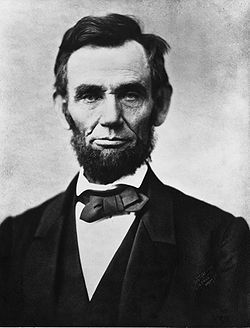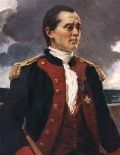This is your morning Open Thread. Pour your favorite beverage and review the past and comment on the future.
Find the past “On This Day in History” here.
November 11 is the 315th day of the year (316th in leap years) in the Gregorian calendar. There are 50 days remaining until the end of the year.
World War I is commemorated on this day, commonly known as Remembrance Day. The ceasefire went into effect at 11:00am CET in 1918, the date of which (and sometimes the commemoration of) is known as Armistice Day. Veterans Day is an annual United States holiday honoring military veterans.
On this day in 1918, the armistice between the Allies and Germany was signed in a railway carriage in Compiegne Forest.
In November 1918 the Engineer in charge of the North Region Railways: Arthur-Pierre Toubeau, was instructed to find a suitably discreet place which would accommodate two trains. By coincidence on the outskirts of Compiègne in the forest of Rethondes lay an artillery railway emplacement. Set deep within the wood and out of the view of the masses the location was ideal.
Early in the morning of the 8th November a train carrying Maréchal Ferdinand Foch, his staff and British officers arrived on the siding to the right, nearest the museum. The train formed a mobile headquarters for Foch, complete with a restaurant car and office.
At 0700 hours another train arrived on the left hand track. One of the carriages had been built for Napoleon III and still bore his coat of arms. Inside was a delegation from the German government seeking an armistice.
There were only a hundred metres between the two trains and the entire area was policed by gendarmes placed every 20 metres.
For three days the two parties discussed the terms of an armistice until at 0530 hours on the 11th November 1918, Matthias Erzberger the leader of the German delegation signed the Armistice document.
Within 6 hours the war would be over.
Initially the carriage (Wagon Lits Company car No. 2419D) used by Maréchal Foch was returned to its former duty as a restaurant car but was eventually placed in the courtyard of the Invalides in Paris.
An American: Arthur Fleming paid for its restoration, and the wagon was brought back to Rethondes on 8th April 1927 and placed in a purpose built shelter (Since destroyed).
Numerous artifacts were obtained from those who had been involved in 1918 and the car was refurbished to its condition at the time of the Armistice.
At the entrance to the avenue leading down to the memorial site is a monument raised by a public subscription organised by the newspaper Le Matin.
The monument is dedicated to Alsace Lorraine and consists of a bronze sculpture of a sword striking down the Imperial Eagle of Germany it is framed by sandstone from Alsace.
The Clairière was inaugurated on 11th November 1922 by President Millerand.


 SS Edmund Fitzgerald (nicknamed “Mighty Fitz,” “The Fitz,” or “The Big Fitz”) was an American Great Lakes freighter launched on June 8, 1958. At the time of its launching, it was one of the first boats to be at or near maximum “St Lawrence Seaway Size” which was 730 feet (220 m) long and 75 feet (23 m) wide. From its launching in 1958 until 1971 the Fitzgerald continued to be one of the largest boats on the Great Lakes.
SS Edmund Fitzgerald (nicknamed “Mighty Fitz,” “The Fitz,” or “The Big Fitz”) was an American Great Lakes freighter launched on June 8, 1958. At the time of its launching, it was one of the first boats to be at or near maximum “St Lawrence Seaway Size” which was 730 feet (220 m) long and 75 feet (23 m) wide. From its launching in 1958 until 1971 the Fitzgerald continued to be one of the largest boats on the Great Lakes. On this day in 1872, fire rips through Boston.
On this day in 1872, fire rips through Boston. 

 The British Egyptologist
The British Egyptologist 
 After departing Brest, Jones successfully executed raids on two forts in England’s Whitehaven Harbor, despite a disgruntled crew more interested in “gain than honor.” Jones then continued to his home territory of Kirkcudbright Bay, Scotland, where he intended to abduct the earl of Selkirk and then exchange him for American sailors held captive by Britain. Although he did not find the earl at home, Jones’ crew was able to steal all his silver, including his wife’s teapot, still containing her breakfast tea. From Scotland, Jones sailed across the Irish Sea to Carrickfergus, where the Ranger captured the HMS Drake after delivering fatal wounds to the British ship’s captain and lieutenant.
After departing Brest, Jones successfully executed raids on two forts in England’s Whitehaven Harbor, despite a disgruntled crew more interested in “gain than honor.” Jones then continued to his home territory of Kirkcudbright Bay, Scotland, where he intended to abduct the earl of Selkirk and then exchange him for American sailors held captive by Britain. Although he did not find the earl at home, Jones’ crew was able to steal all his silver, including his wife’s teapot, still containing her breakfast tea. From Scotland, Jones sailed across the Irish Sea to Carrickfergus, where the Ranger captured the HMS Drake after delivering fatal wounds to the British ship’s captain and lieutenant.
Recent Comments